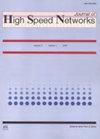Modelling a stacked dense network model for outlier prediction over medical-based heart prediction data
IF 1
Q4 COMPUTER SCIENCE, INFORMATION SYSTEMS
引用次数: 0
Abstract
Recently, deep learning has been used in enormous successful applications, specifically considering medical applications. Especially, a huge number of data is captured through the Internet of Things (IoT) based devices related to healthcare systems. Moreover, the given captured data are real-time and unstructured. However, the existing approaches failed to reach a better accuracy rate, and the processing time needed to be lower. This work considers the medical database for accessing the patient’s record to determine the outliers over the dataset. Based on this successful analysis, a novel approach is proposed where some feasible and robust features are extracted to acquire the emotional variations for various ways of expression. Here, a novel dense-Convolutional Neural Network (CNN) with ResNet (CNN-RN) extracts features from patients’, while for establishing visual modality, deep residual network layers are used. The significance of feature extraction is less sensitive during outlier prediction while modeling the context. To handle these issues, this dense network model is used for training the network in an end-to-end manner by correlating the significance of CNN and RN of every stream and outperforming the overall approach. Here, MATLAB 2020b is used for simulation purposes, and the model outperforms various prevailing methods for consistent prediction. Some performance metrics include detection accuracy, F1-score, recall, MCC, p-value, etc. Based on this evaluation, the experimental results attained are superior to other approaches.基于医学心脏预测数据的离群值预测的堆叠密集网络模型建模
最近,深度学习已经在许多成功的应用中得到了应用,特别是在医疗应用中。特别是,通过与医疗系统相关的基于物联网(IoT)的设备捕获大量数据。此外,给定的捕获数据是实时的和非结构化的。然而,现有的方法无法达到更好的准确率,并且需要更低的处理时间。这项工作考虑了访问患者记录的医疗数据库,以确定数据集上的异常值。在此基础上,提出了一种新颖的方法,提取可行且鲁棒的特征来获取各种表达方式的情感变化。本文采用基于ResNet的新型密集卷积神经网络(CNN) (CNN- rn)对患者进行特征提取,并利用深度残差网络层建立视觉模态。特征提取的重要性在上下文建模的离群值预测中不太敏感。为了解决这些问题,通过将每个流的CNN和RN的重要性关联起来,使用这种密集网络模型以端到端方式训练网络,并且优于整体方法。本文使用MATLAB 2020b进行仿真,该模型在一致性预测方面优于各种流行方法。一些性能指标包括检测精度、f1分数、召回率、MCC、p值等。在此基础上,得到的实验结果优于其他方法。
本文章由计算机程序翻译,如有差异,请以英文原文为准。
求助全文
约1分钟内获得全文
求助全文
来源期刊

Journal of High Speed Networks
Computer Science-Computer Networks and Communications
CiteScore
1.80
自引率
11.10%
发文量
26
期刊介绍:
The Journal of High Speed Networks is an international archival journal, active since 1992, providing a publication vehicle for covering a large number of topics of interest in the high performance networking and communication area. Its audience includes researchers, managers as well as network designers and operators. The main goal will be to provide timely dissemination of information and scientific knowledge.
The journal will publish contributed papers on novel research, survey and position papers on topics of current interest, technical notes, and short communications to report progress on long-term projects. Submissions to the Journal will be refereed consistently with the review process of leading technical journals, based on originality, significance, quality, and clarity.
The journal will publish papers on a number of topics ranging from design to practical experiences with operational high performance/speed networks.
 求助内容:
求助内容: 应助结果提醒方式:
应助结果提醒方式:


